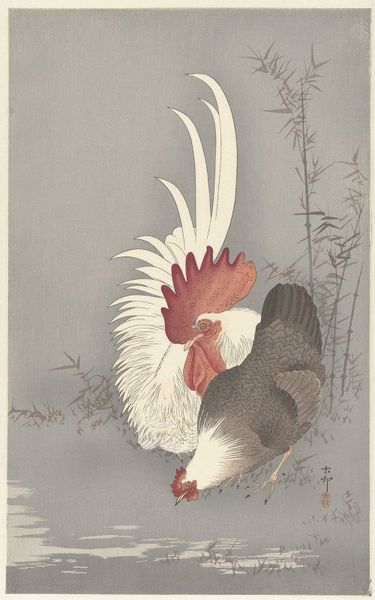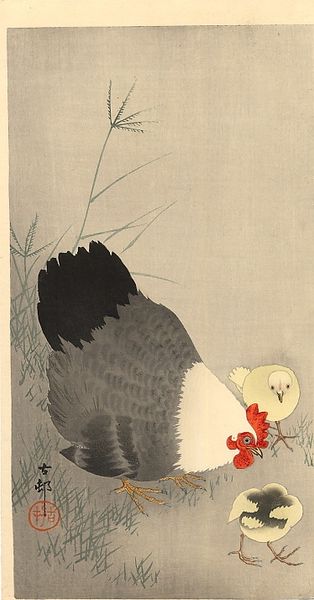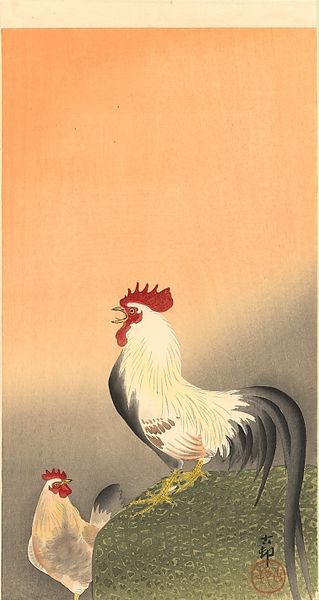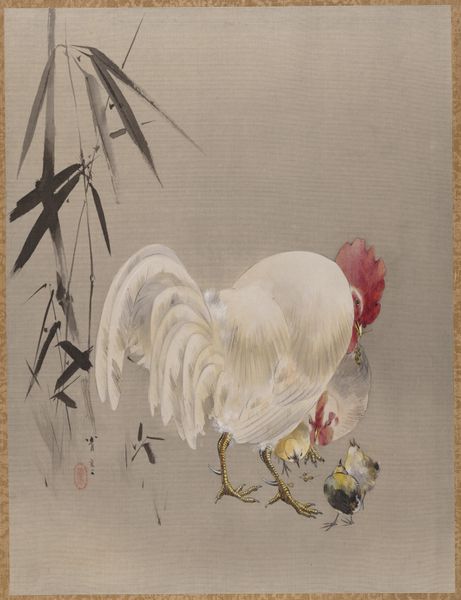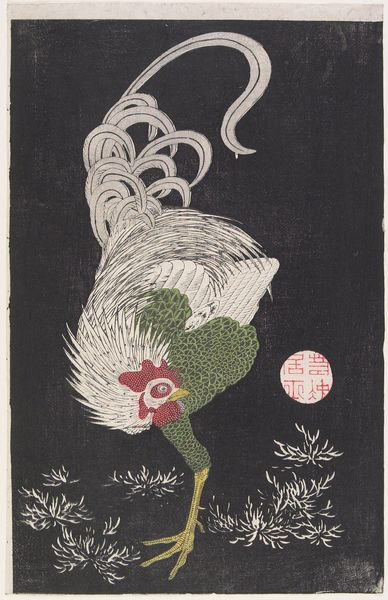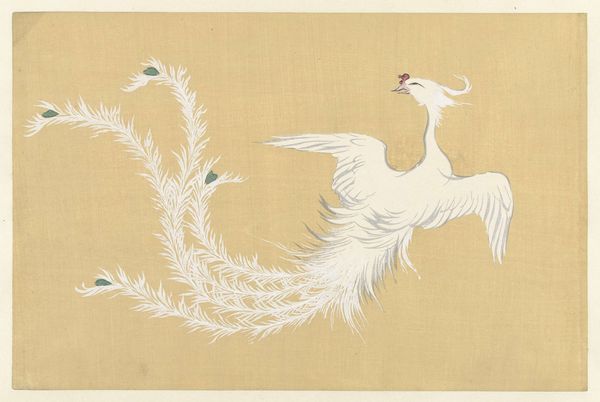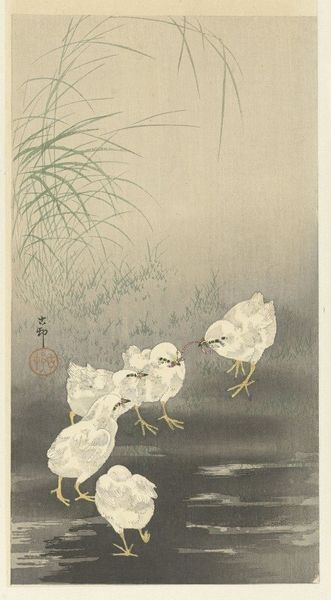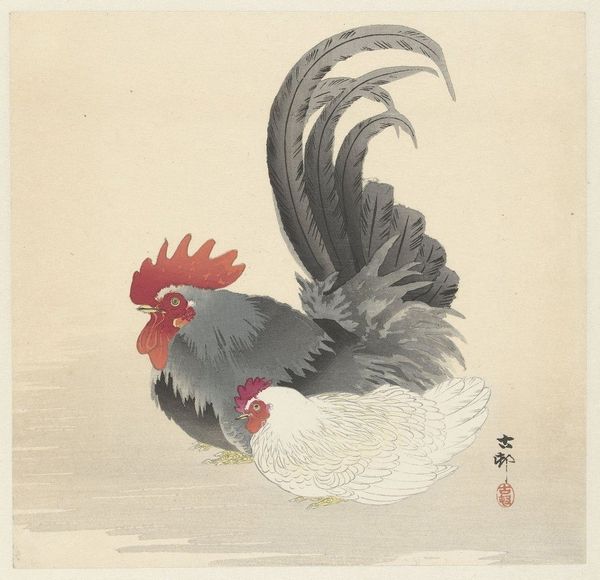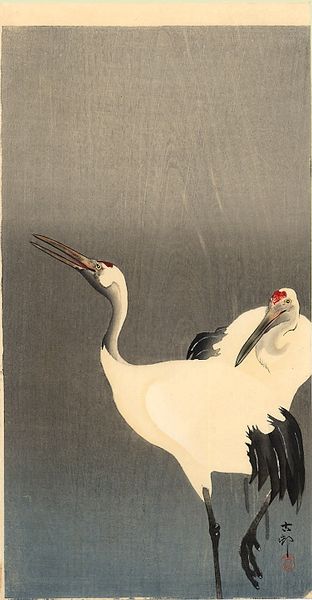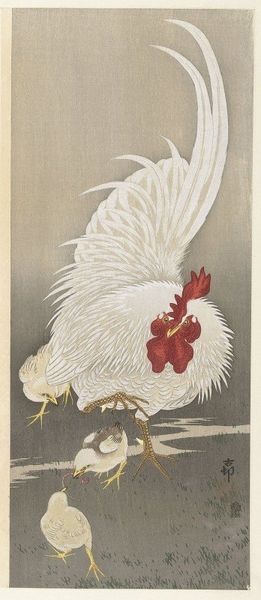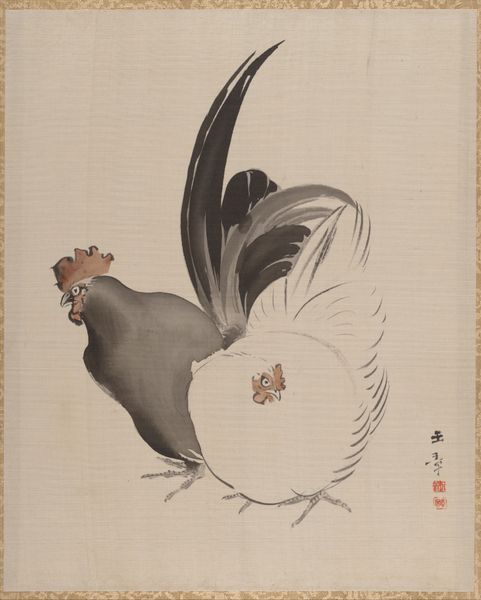
print, woodblock-print
#
animal
# print
#
impressionism
#
asian-art
#
landscape
#
bird
#
ukiyo-e
#
woodblock-print
#
realism
Copyright: Public domain
Editor: Here we have Ohara Koson's woodblock print of a Rooster and chicks. Its tones are rather muted, but it's also full of subtle life and delicate realism. What strikes you when you look at it? Curator: I'm drawn to how Koson uses this seemingly simple family scene to tap into deeper currents related to gender, societal roles, and nature’s power. What might this protective rooster signify in terms of masculine identity within its cultural context? Editor: I hadn't really considered that, but looking at it that way makes me wonder about the position of women too—are the chicks, perhaps, stand-ins? Curator: Exactly. Think about the historical marginalization of women and other underrepresented groups and how the "domestic sphere," here represented by the rooster's care, often confines their agency. Even the ukiyo-e style itself was often commercial, so consider how the depiction of family units could uphold conventional family structures for social consumption. What connections can we draw between this depiction and contemporary debates about gender and caregiving? Editor: It's thought-provoking to consider this through a feminist lens, challenging what I initially perceived as simply a sweet image. The layers of meaning it opens up… it shows how deeply ingrained power dynamics are. Curator: Indeed. Analyzing such art demands that we question normative roles, assess ingrained privileges, and consider diverse standpoints. I am glad we’ve re-evaluated the possible social constructs and preconceptions rooted within this seemingly candid landscape. Editor: I definitely have a richer understanding after hearing your thoughts on the deeper socio-historical messages conveyed in this Koson print. Thanks!
Comments
No comments
Be the first to comment and join the conversation on the ultimate creative platform.

